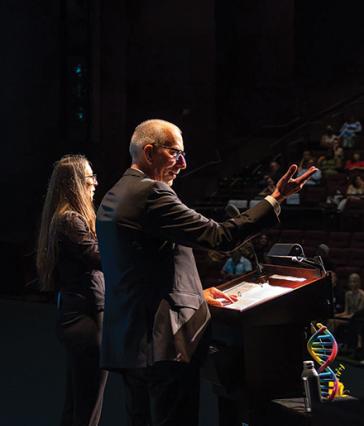The history behind Juneteenth, a day of reflection and celebration
Juneteenth, which became a federal holiday in 2021, commemorates the day – June 19, 1865 – when enslaved people in Galveston, Texas, received word of their emancipation. It was more than two years after President Abraham Lincoln’s signing of the Emancipation Proclamation on Jan. 1, 1863.
The holiday has since become a symbol of not only the end of slavery, but of the continuing struggle for civil rights and equality.
“Juneteenth must be placed and celebrated, not in isolation, but in the midst of the larger freedom struggle before and after June 19, 1865,” said Maulana Karenga, Ph. D., professor and chair of Africana Studies at Cal State Long Beach. “Only then can it do honor to the people who lived, served and died on the various battlefields for freedom we were compelled to enter and remain on even today.
“And it is in this context of a continuing struggle, an unfinished fight for a still-to-be-realized freedom that we are able to rightfully recognize and find common cause with those who continue the struggle in the honor of our ancestors and in the interest of our own good and the good of future generations.”
A few facts about the holiday:
The meaning of the name
Juneteenth gets its name from combining "June" and "nineteenth," the day Union Gen. Gordon Granger and his troops arrived in Galveston, bearing the message of freedom for the enslaved people there.
Why the two-year delay?
The Rebel government of the Southern Confederacy viewed themselves as an independent nation and refused to enforce Lincoln’s proclamation. Texas became a stronghold of Confederate influence in the latter years of the Civil War as the slaveholding population migrated – with the people they had enslaved – to Texas.
The order encouraged the newly freed people to remain with their past owners.
The order read, “The freedmen are advised to remain quietly at their present homes and work for wages. They are informed that they will not be allowed to collect at military posts and that they will not be supported in idleness either there or elsewhere.”
The period after Juneteenth is known as the “Scatter”
Undeterred by the recommendation to remain in place, many left the area during the order's original reading. In the following weeks, the newly freed people left Texas in vast numbers to find family members and make their way in the postbellum United States.
How it is celebrated
To commemorate Juneteenth, friends and family gather to celebrate the legacy of resilience and acknowledge the ongoing struggle through marches, prayers, cookouts, picnics, music, festivals and other remembrances. CSULB is co-sponsoring the Long Beach Juneteenth Celebration held Saturday, June 17, at Rainbow Lagoon Park in Long Beach.
Although the state has recognized Juneteenth since 2003, it did not become a state holiday in California until 2022.

Meaning behind the flag
The first flag that represented the holiday was created in 1997 by Ben Haith, the founder of the National Juneteenth Celebration Foundation.
The flag's symbols:
- The burst — The bursting outline around the star is inspired by a nova – a new star – representing a new beginning for the newly freed people.
- The star — The white star in the center of the flag has a dual meaning, Haith said. It represents both Texas, the Lone Star State, but also the freedom of all Black Americans in all 50 states.
- The arc — The curving arc across the width of the flag represents a new horizon: the opportunities and promise that lay ahead for Black Americans.
- The colors —The red, white and blue represent the American flag, a reminder that the enslaved people and their descendants were and are Americans.
Sources: American Battlefield Trust, National Juneteenth Celebration Foundation, NPR, Pew Research Center, Encyclopedia Britannica

















